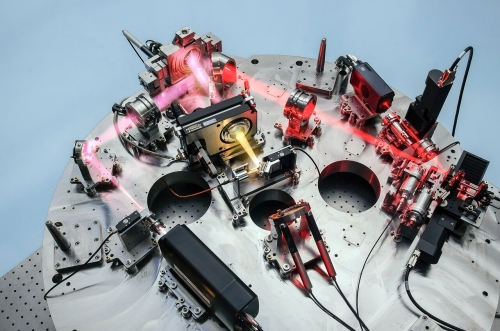The Near InfraRed Planet Searcher (NIRPS) instrument, mounted on ESO’s 3.6-m telescope at the La Silla Observatory in Chile, has successfully performed its first observations. The instrument will focus its search on rocky worlds, which are key targets for understanding how planets form and evolve, and are the most likely planets where life may develop. NIRPS will search for these rocky exoplanets around small, cool red dwarf stars — the most common type of stars in our Milky Way galaxy, which have masses from about two to ten times smaller than our Sun.
First Light of NIRPS

NIRPS will search for exoplanets using the radial velocity method. As a planet orbits a star, its gravitational attraction causes the star to “wobble” slightly, causing its light to be redshifted or blueshifted as it moves away from or towards Earth. NIRPS will look for radial velocity variations using near-infrared light as this is the main range of wavelengths emitted by such small, cool stars. It joins the High Accuracy Radial velocity Planet Searcher (HARPS) in the hunt for new rocky worlds. HARPS, which has been installed on ESO’s 3.6-m telescope at the La Silla Observatory in Chile since 2003, also uses the radial velocity method, but operates using visible light. Using both instruments simultaneously will provide a more comprehensive analysis of these rocky worlds.
Another key difference between the two instruments is that NIRPS will rely on a powerful adaptive optics system. By using it, NIRPS will more than double its efficiency in both finding and studying exoplanets.
NIRPS was built by an international collaboration led by the Institute for Research on Exoplanets team at the Université de Montréal in Canada and the Observatoire Astronomique de l’Université de Genève in Switzerland. The other institutes involved in the NIRPS consortium are the Instituto de Astrofísica e Ciências do Espaço, University of Porto & University of Lisbon, Portugal; Instituto de Astrofísica de Canarias, Spain; Université de Grenoble, France; and the Universidade Federal do Rio Grande do Norte, Brazil.
